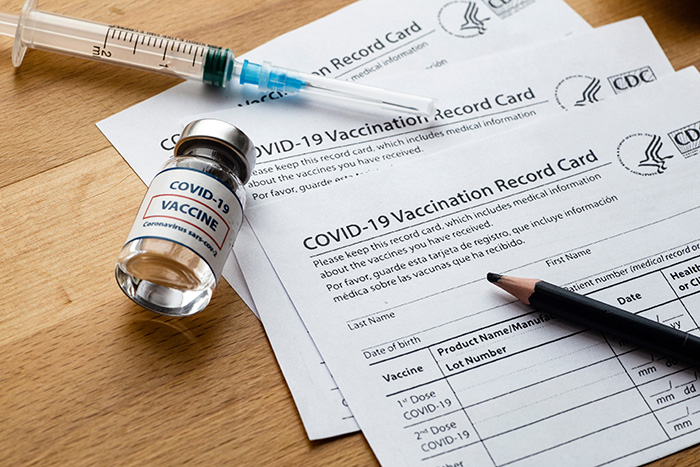Survey: Is the CDC Missing the Mark on Vaccination Rates?
Researchers show many more are unvaccinated than what CDC data suggest
Get all our news
If the inaccurate estimates are presumed to be valid, that can have substantial implications for vaccination campaigns, the allocation of resources, and ultimately public health.”
James Druckman
IPR political scientist

The Centers for Disease Control and Prevention (CDC) have reported rising COVID-19 vaccination rates since the start of the pandemic, but these data might give an overly optimistic view of how many Americans are actually vaccinated, according to a recent national survey.
The CDC estimates that over two years after the initial rollout of the first COVID-19 vaccine, 79% of the population has been vaccinated with two shots of Pfizer or Moderna or one shot of Johnson & Johnson. But according to the COVID States Project survey, conducted between December 2022 and January 2023, the figure is 73%, or 6 percentage points lower.
Many refer to and use CDC data, considering it accurate and reliable. Mainstream media outlets, such as the New York Times and National Public Radio, report the data, and public health experts and policymakers use the data to inform their decision making and guide public health. But how accurate are these assessments if the actual data are skewed?
“If the inaccurate estimates are presumed to be valid, that can have substantial implications for vaccination campaigns, the allocation of resources, and ultimately public health,” said IPR political scientist James Druckman, who co-authored the report.
He is one of the researchers from Northwestern, Harvard, Rutgers, and Northeastern universities who surveyed nearly 25,000 Americans about their vaccination status. The survey is the 100th report from the COVID States Project, a collaboration launched in March 2020 to help practitioners and governments make informed decisions and allocate resources more effectively.

The vaccination data the researchers collected align closely with estimates from the Kaiser Family Foundation, also collected through surveys. The CDC data start to overshoot the COVID States and Kaiser data for “at least one shot” beginning in July 2021 when the first boosters were approved. It is a gap that continues to increase with each new booster round. The current gap between the CDC and COVID States estimates is a full 17 percentage points—92% for the CDC versus 75% for COVID States, and this has critical policy implications.
“It means efforts to encourage vaccination and make vaccination accessible to hard-to-reach populations could prematurely come to an end,” Druckman said.
The CDC overestimates are starker when looking at state data: Take the example of Massachusetts, which the CDC reports as having one of the nation’s highest vaccination rates. It finds that nearly 6.5 million adults have received at least one shot of the vaccine; however, the state has only 5.6 million adults in all. If calculating percentages, that means 115% of Massachusetts adults have received at least one shot of the vaccine, but the CDC caps its reporting at 95%. The COVID States researchers, on the other hand, find only 89% in Massachusetts have received one shot.
For Illinois, the researchers estimate that 75% of adults have received at least one shot of the vaccine, while the CDC estimates it to be 88%.
The researchers offer that these errors in the underlying official records used by the CDC are driven by states not being able to link records of multiple shots to an individual, especially if that person forgets to bring their vaccination card to a subsequent appointment.
They also show wide differences in reports of those getting a bivalent booster, with the CDC reporting that only 19% have, while COVID States report nearly a third have (29%).
The CDC data suggest 13% of the population has received only a single shot of the vaccine, while the researchers find only 2% has received one shot. They point to other data distortions driven by factors like men being less likely to know where their first-dose vaccination card is than women, 8% vs. 5% respectively.
The researchers highlight that there are three times as many people who are completely unvaccinated than what the CDC suggests, giving fellow Americans a possibly false sense of how many of their peers are vaccinated.
“If those who are immunocompromised rely on the CDC estimates, it could provide them with a false sense of security,” Druckman said.
Read the report. Previous COVID States Project reports are available here.
James Druckman is the Payson S. Wild Professor of Political Science and IPR associate director and fellow. Jonathan Schulman is a PhD student in the political science department.
Photo credit: Shutterstock
Published: April 12, 2023.


